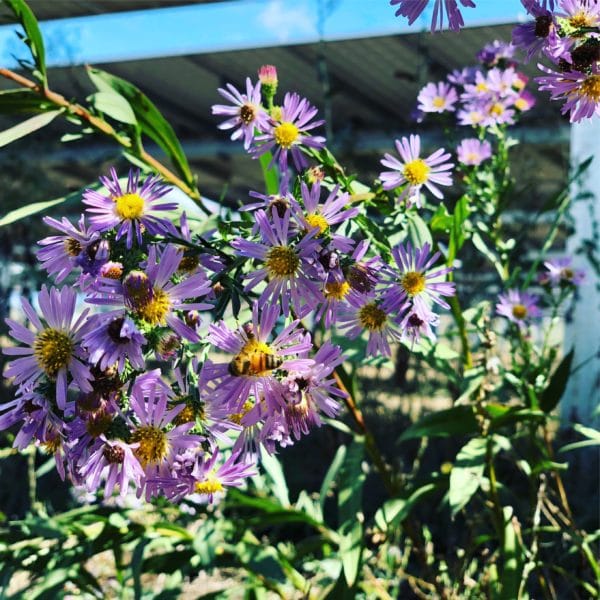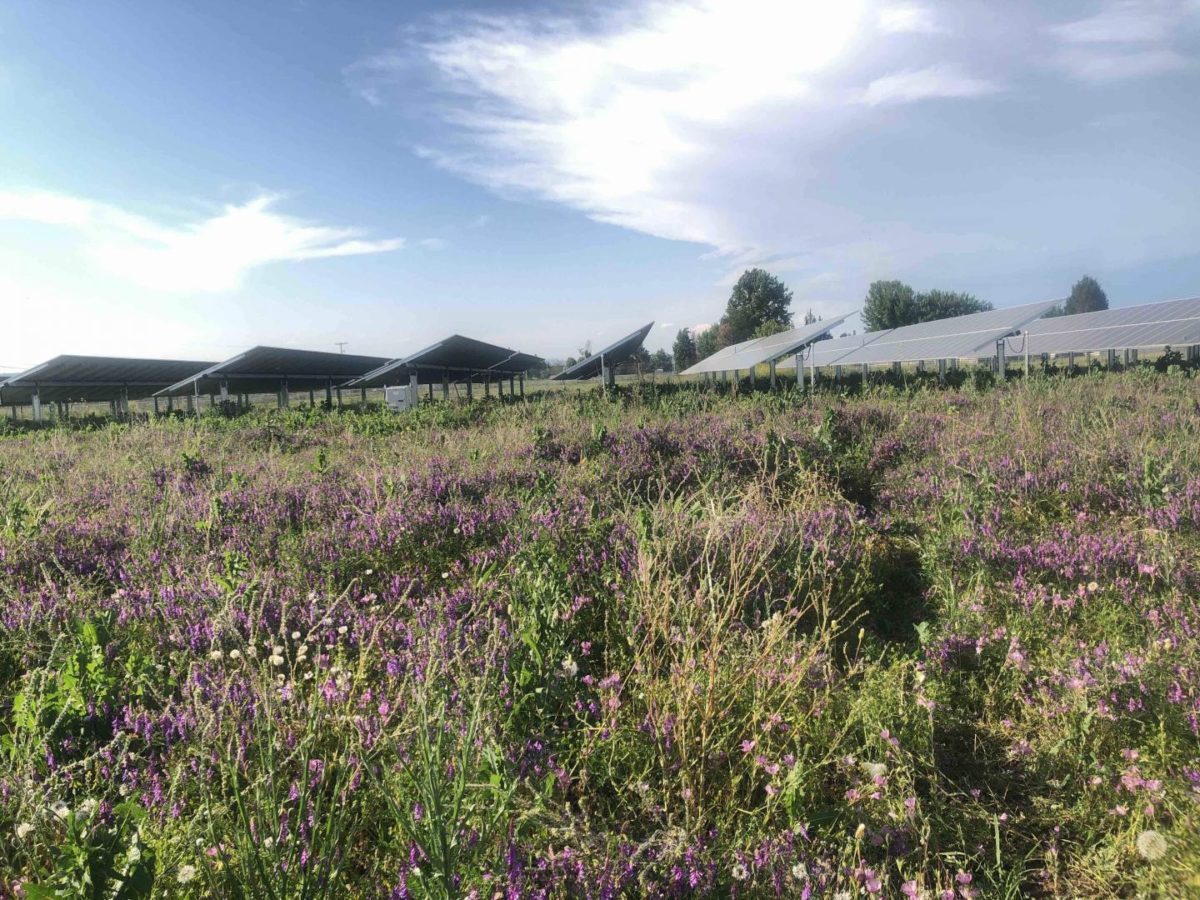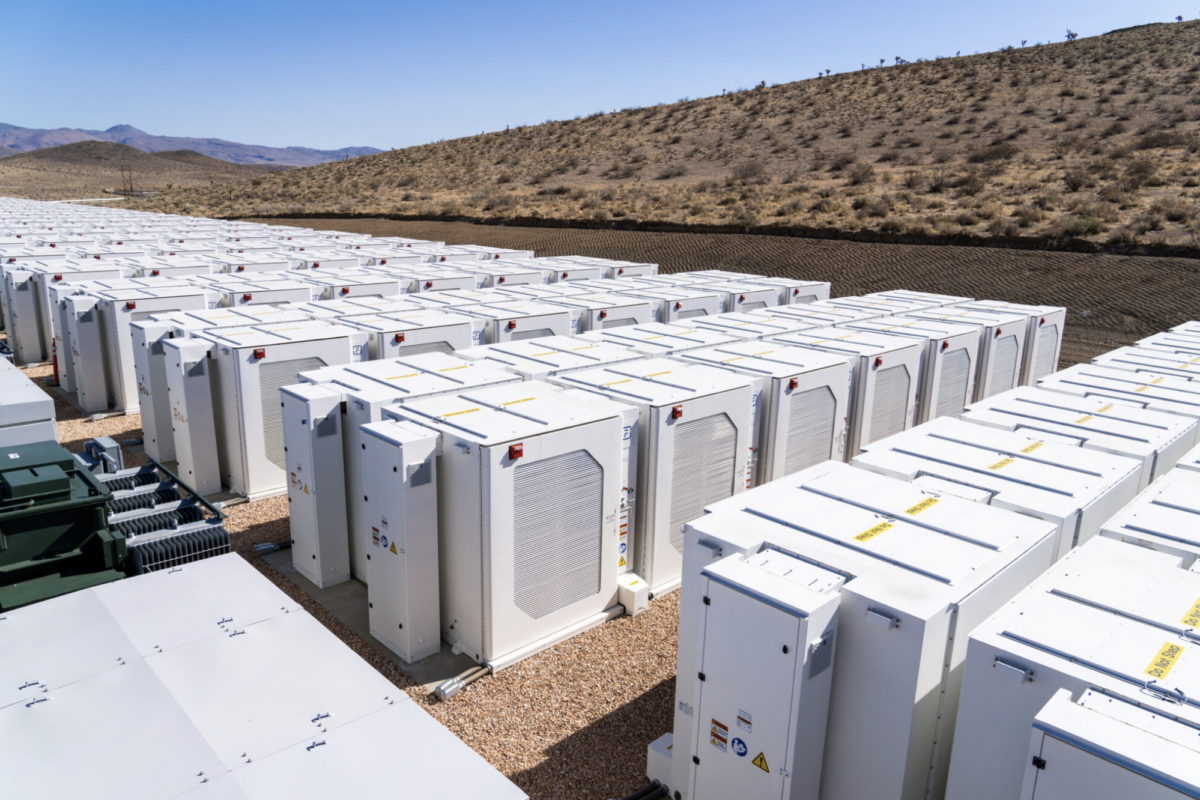Pollinating insects visit flowers even if these grow under the panels of a solar park and the modules' shade is also beneficial for delaying the timing of floral blooms, which in turn has a positive effect on the abundance and diversity of the pollinator themselves.
This is the main conclusion of the study “Partial shading by solar panels delays bloom, increases floral abundance during the late-season for pollinators in a dryland, agrivoltaic ecosystem,” recently published in scientific reports, in which scientists from the Oregon State University in the U.S. have investigated if coupling PV with the habitat for wild and managed pollinators can help increase biodiversity and agricultural health.
“Some states, such as Minnesota, North Carolina, Maryland, Vermont, and Virginia, have developed statewide guidelines and incentives to promote pollinator-focused solar installations,” the scientists state. “In this practice, forage for pollinators is established as the solar array’s understory rather than the traditional turf grass or gravel.”

Image: Oregon State University
Their work began from the assumption that the panel's partial shading is able to create a microclimate that favors the abundant growth of more varied flowers and pollinators compared to plots with no shade, particularly during summer months. Their measurements were taken at a 10 MW solar plant located on an 18 hectare surface in Jackson County, Oregon.
The project site was previously utilized for cattle grazing and hosts vegetation such as non-native rhizomatous grasses and non-native forbs. “By nature of the installation process, some surface vegetation was removed, and surface soils were disturbed in areas where solar panels were installed,” the paper notes. “After installation, the site was prepared for restoration with native plants.” In 2018, native forbs and grasses were planted with the aim of creating an ideal habitat for both pollinators.
Data on pollinator and plant populations were collected seven times each over two-day periods in 2019 during July, August, and September. The analysis considered full shade areas with only 5% of sunlight, partial shade plots with 75% of sunlight, and portions with 100% of sunlight. The academics collected data from net radiation, air temperature, and relative humidity at 15-minute intervals at a height of 1.4 m.
Insect specimens were collected to inventory pollinating insect composition in plots. “Our unreplicated climate observations showed that solar panel shading alters the solar radiation, soil temperature, soil moisture, and vapor pressure deficit across treatments,” the US group stated. “Full shade plots experienced reduced further soil temperature and when compared to both full sun and partial shade plots.”
Floral abundance was found to be more abundant in partial shade plots, where around 4% more blooms were reported compared to both full sun and full shade plots. 342 pollinating insects representing 65 different species were collected, including native bees (45%) flies (20%), honey bees (12%), beetles (12%), wasps (7%), and others (3%). Insect species abundance was found to be higher in partial shade and full sun than in full shade.
“At our site, partial shading by solar panels increased bloom abundance by delaying bloom timing, increasing forage for pollinators during the hot, dry, late season — a time when nutrition is particularly important,” the scientists concluded, adding that this positive outcome should be the results of a series of factors including photoperiodicity, photosynthetic efficiency, a decrease in soil temperature and moisture on germination, and root establishment.
“Unused or underutilized lands below solar panels represent an opportunity to augment the expected decline of pollinator habitat,” said research co-author Maggie Graham. “Near agricultural lands, this also has the potential to benefit the surrounding agricultural community and presents an avenue for future study.”
In previous research, the same research group had developed a model to assess the overlap between solar potential and underlying land use. The researchers concluded that croplands, grasslands, and wetlands are the top three land classes for PV projects linked to agricultural activities, while barren terrain, traditionally prioritized for solar PV system installation, ranked fifth.
In another paper, the Oregon State University group stated that using land for both solar photovoltaic power and agriculture could provide 20% of total electricity generation in the United States.
This content is protected by copyright and may not be reused. If you want to cooperate with us and would like to reuse some of our content, please contact: editors@pv-magazine.com.




By submitting this form you agree to pv magazine using your data for the purposes of publishing your comment.
Your personal data will only be disclosed or otherwise transmitted to third parties for the purposes of spam filtering or if this is necessary for technical maintenance of the website. Any other transfer to third parties will not take place unless this is justified on the basis of applicable data protection regulations or if pv magazine is legally obliged to do so.
You may revoke this consent at any time with effect for the future, in which case your personal data will be deleted immediately. Otherwise, your data will be deleted if pv magazine has processed your request or the purpose of data storage is fulfilled.
Further information on data privacy can be found in our Data Protection Policy.